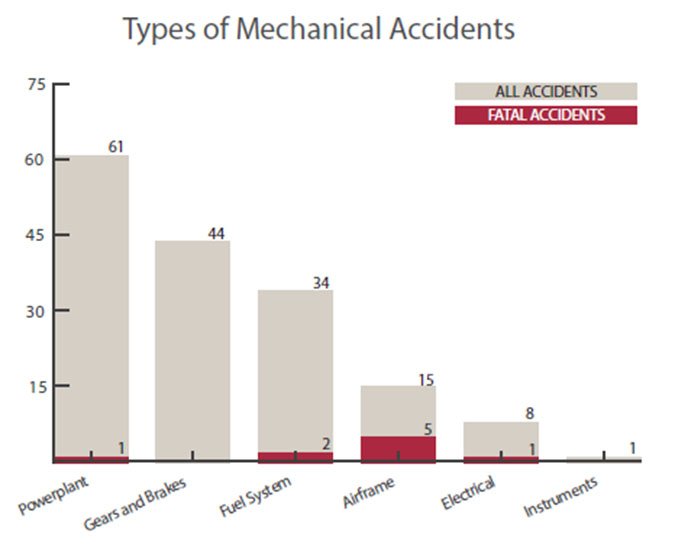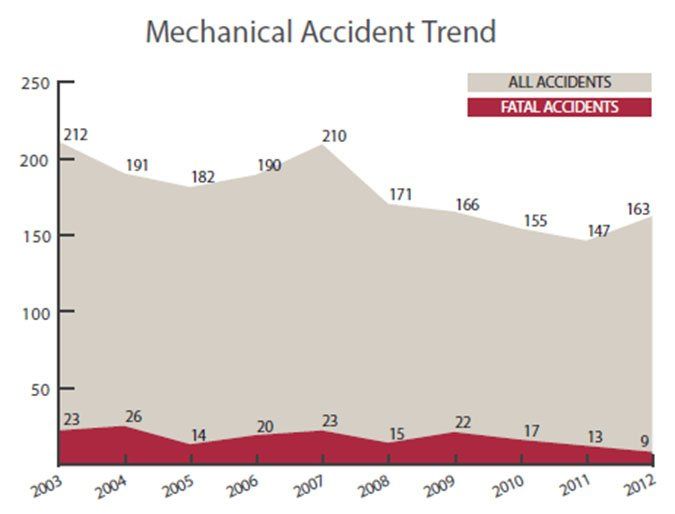When deciding which IFR emergencies to practice, it can be instructive to look at the overall accident record. Not only can we get an idea of which failures to practice, but also of their lethality. The good news is it’s uncommon for mechanical failures to result in fatalities, and the trend is for fewer of them. And there’s better news we’ll get to in a moment.
At right are two graphs adapted from the AOPA ASI 24th Joseph T. Nall Report, which discusses general aviation accidents in 2012. Clearly, powerplant problems lead the pack, and such failures definitely can affect IFR operations. Landing gear and brakes, not so much. And it’s not clear how the airframe failures manifested themselves. Did the airframe fail in turbulence, which presumably is an IFR problem, but with an easy cure: Don’t fly in thunderstorms.
Overall, the number of mechanicals has been trending downward, except for 2012, the last year for which data are available. And fatalities resulting from mechanical failure remain uncommon.
That good news mentioned above? These data only resolve the mechanical failures that resulted in an accident. The truth is no one knows how many mechanical failures there are each year. If the pilot successfully handled the situation, there’s no accident report to study. What that may say about the overall number of mechanical failures and personal aircraft reliability is something we’ll leave for another day.






